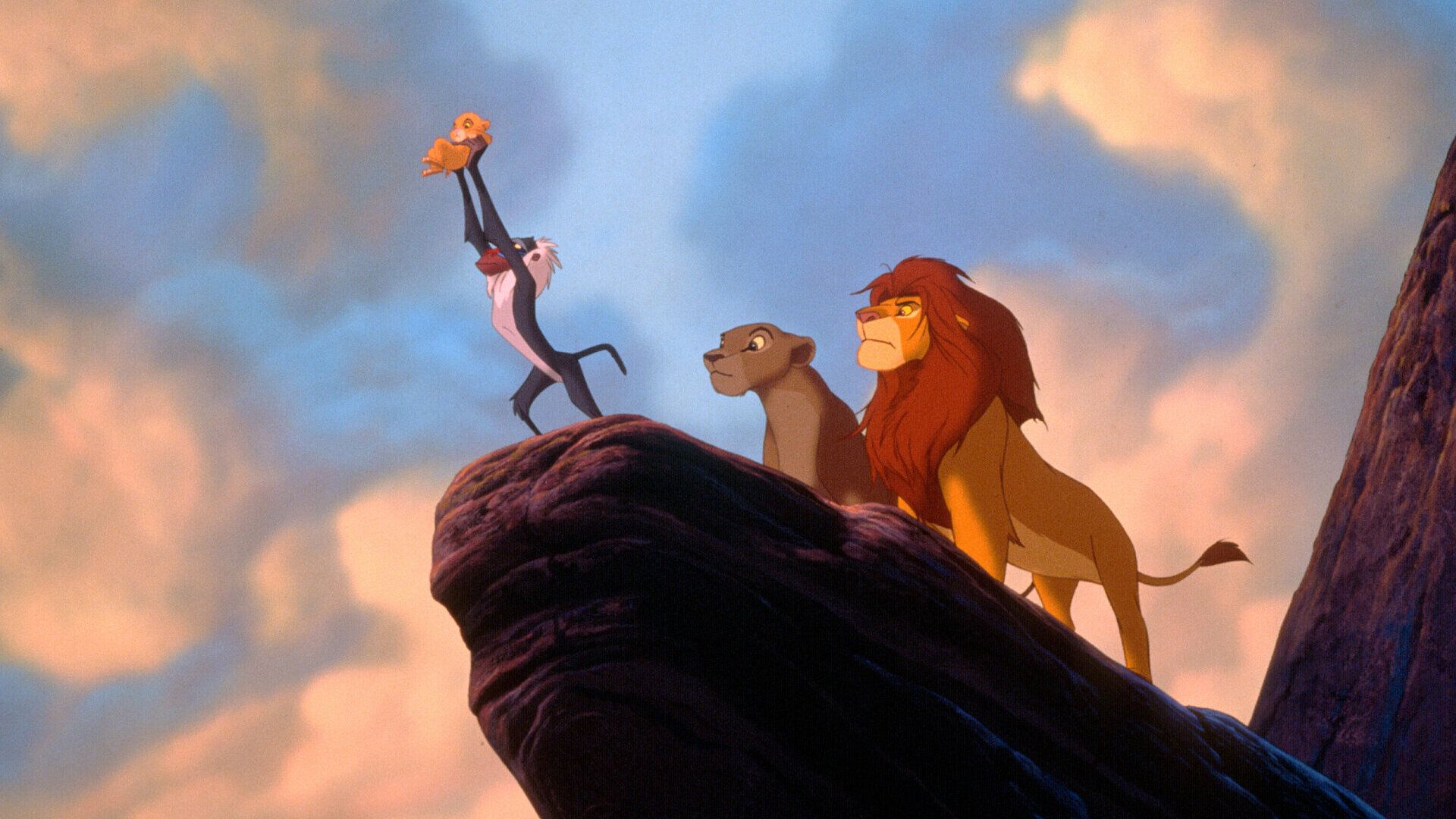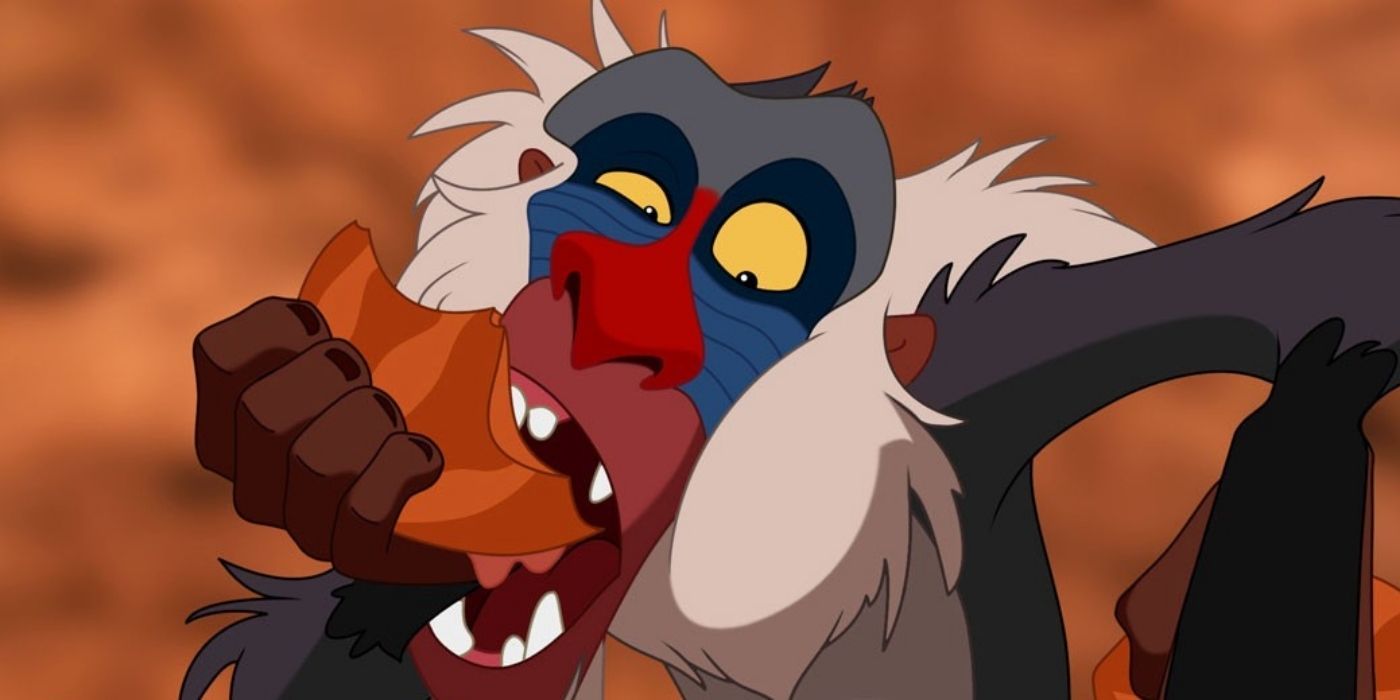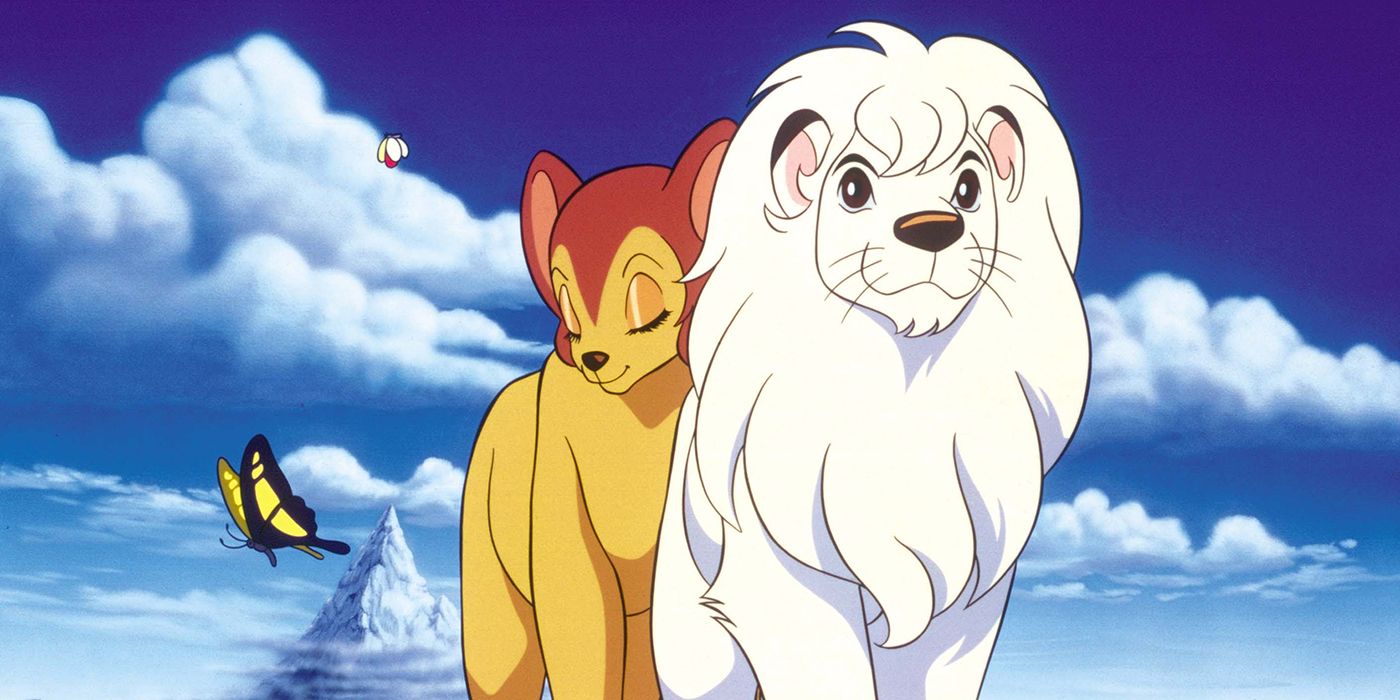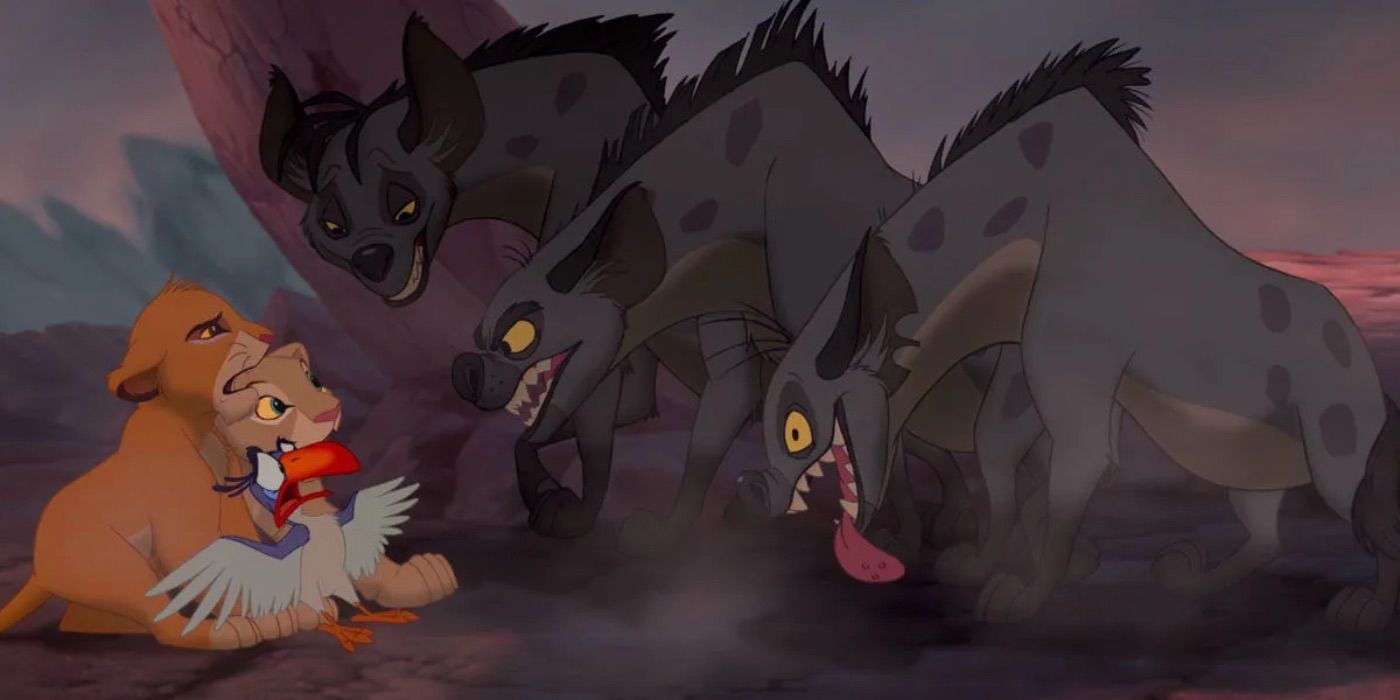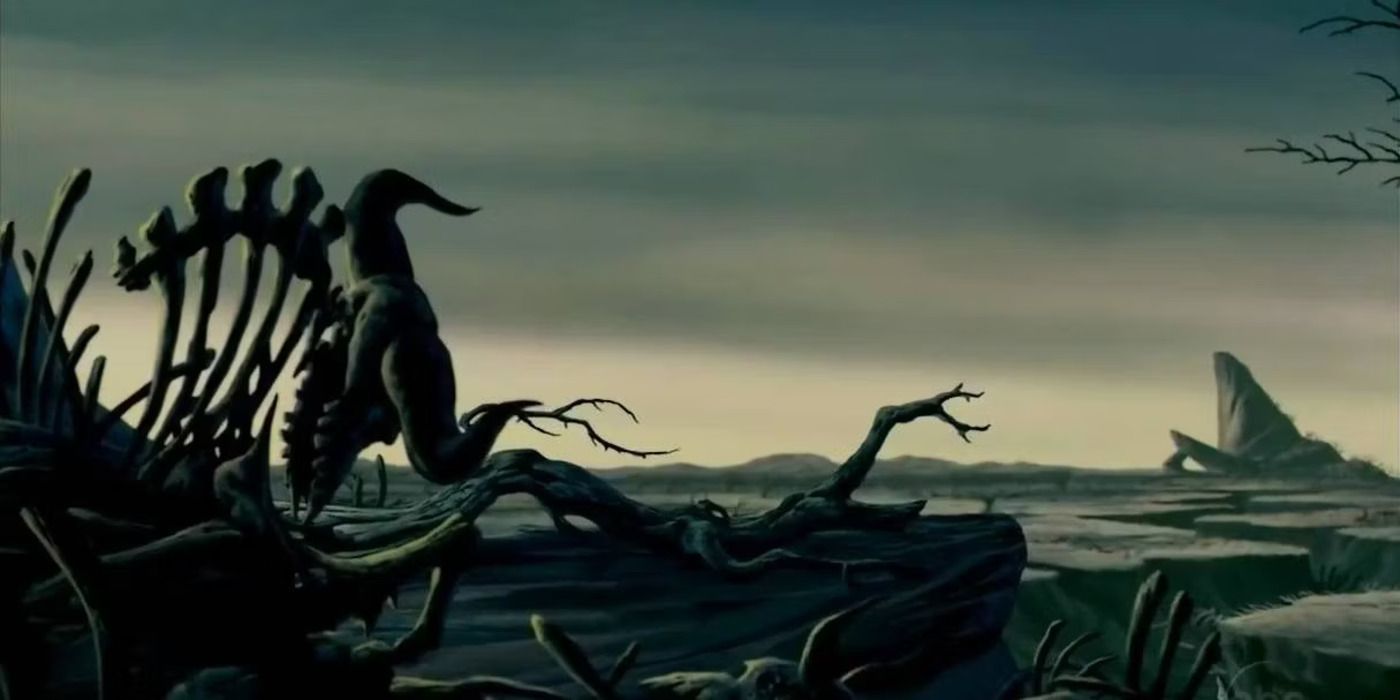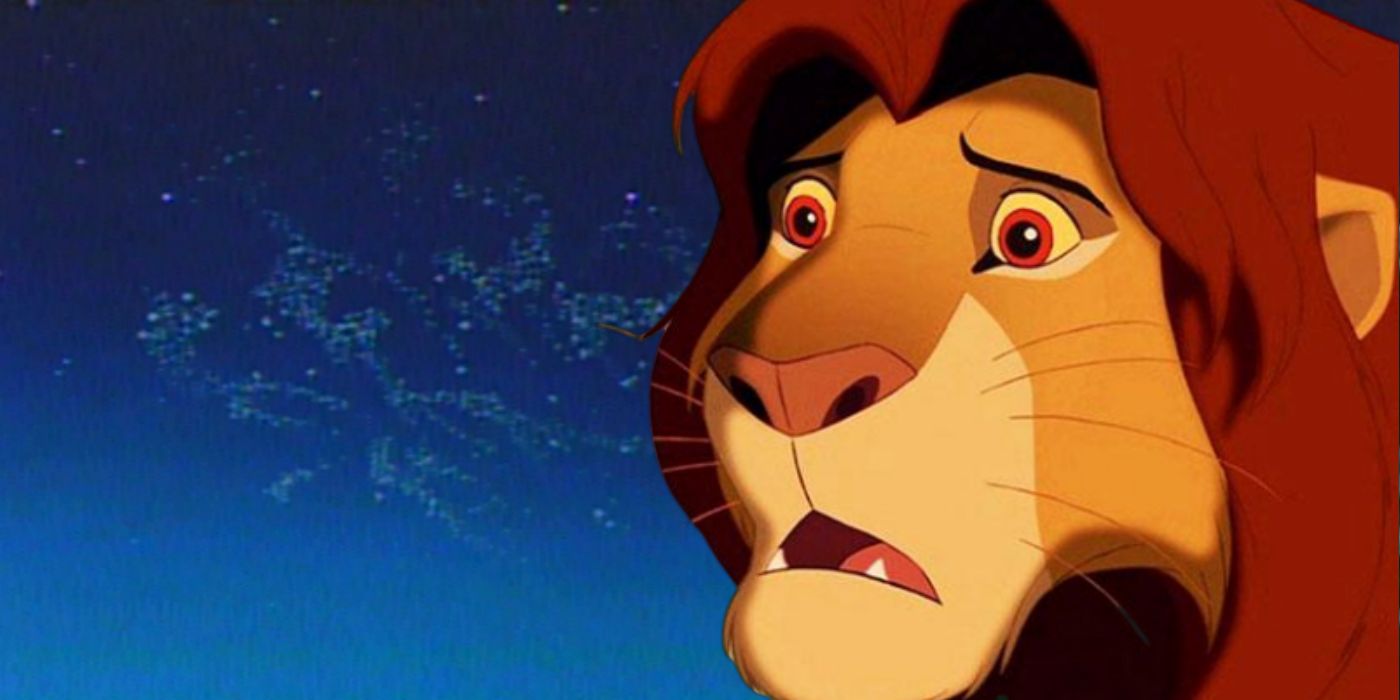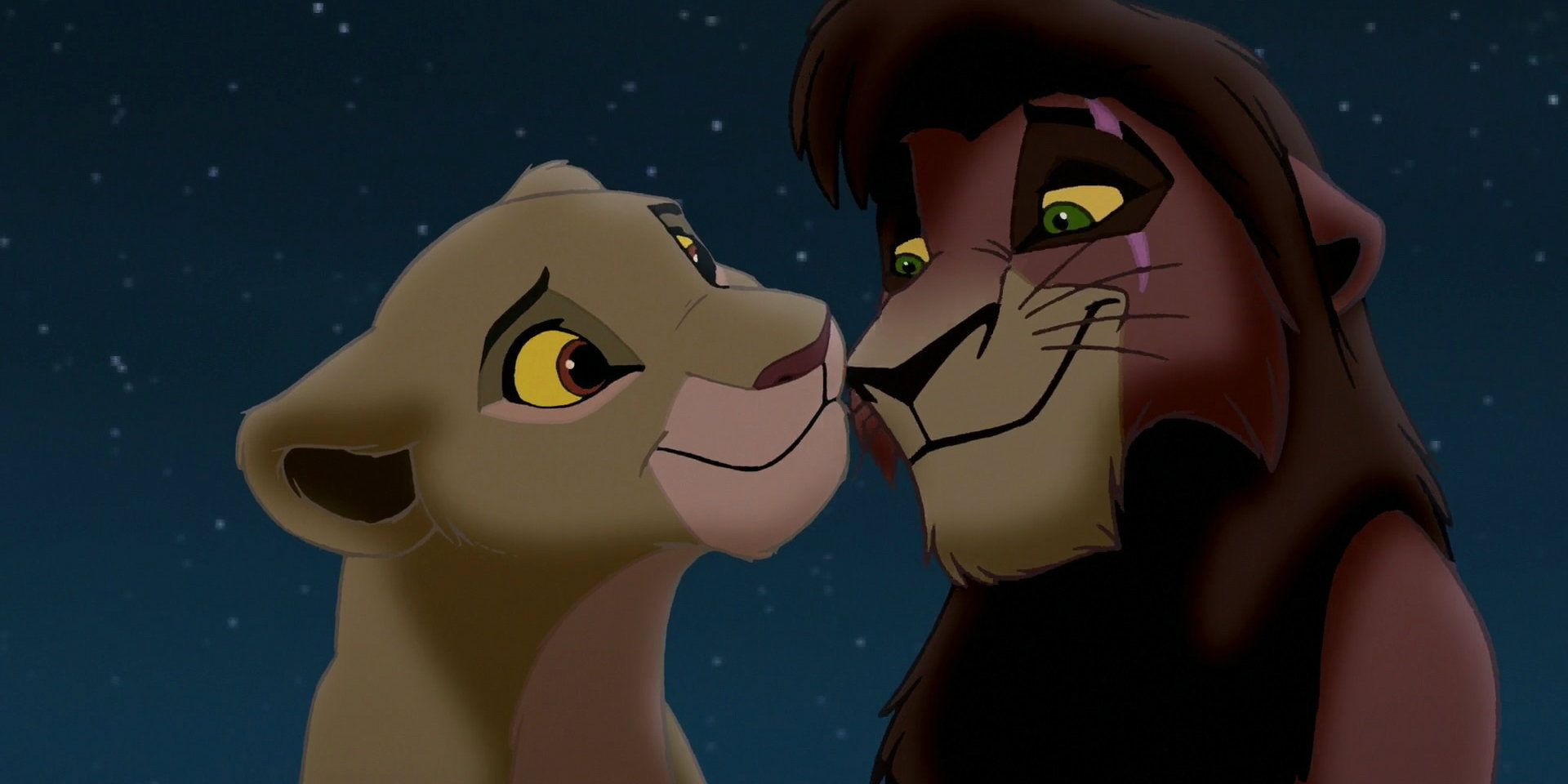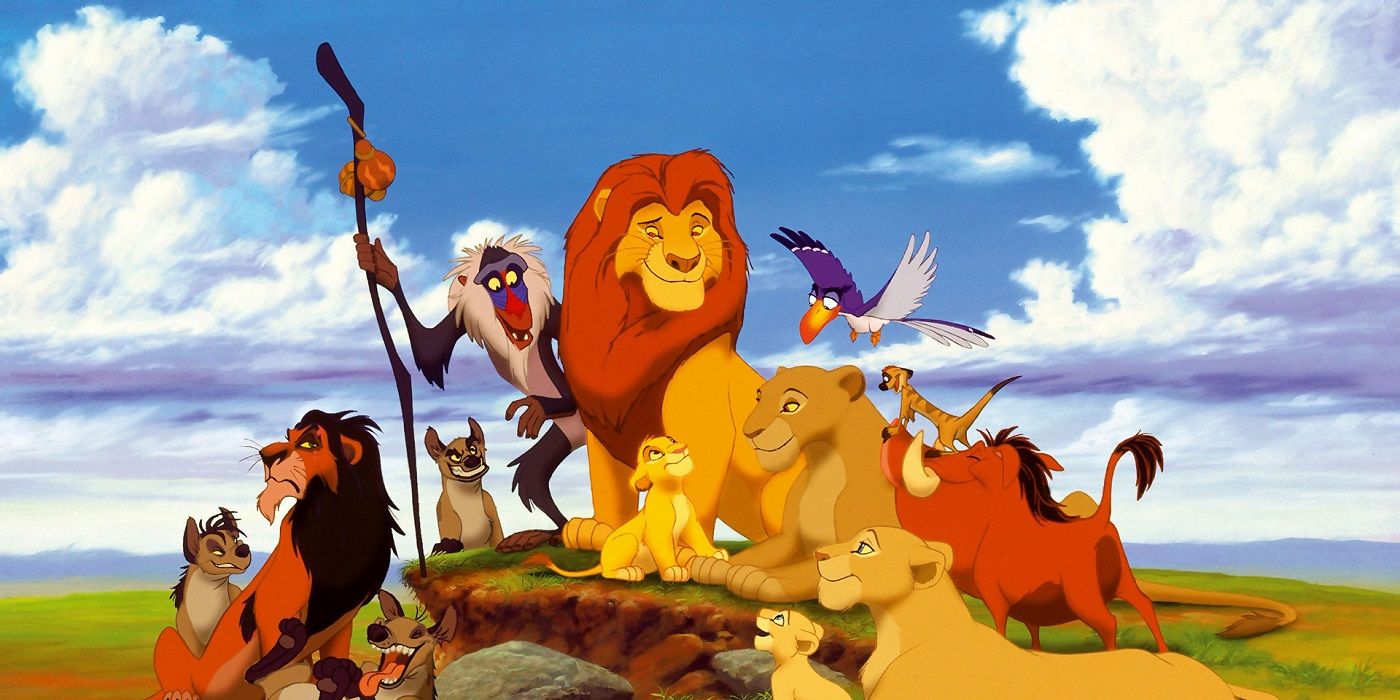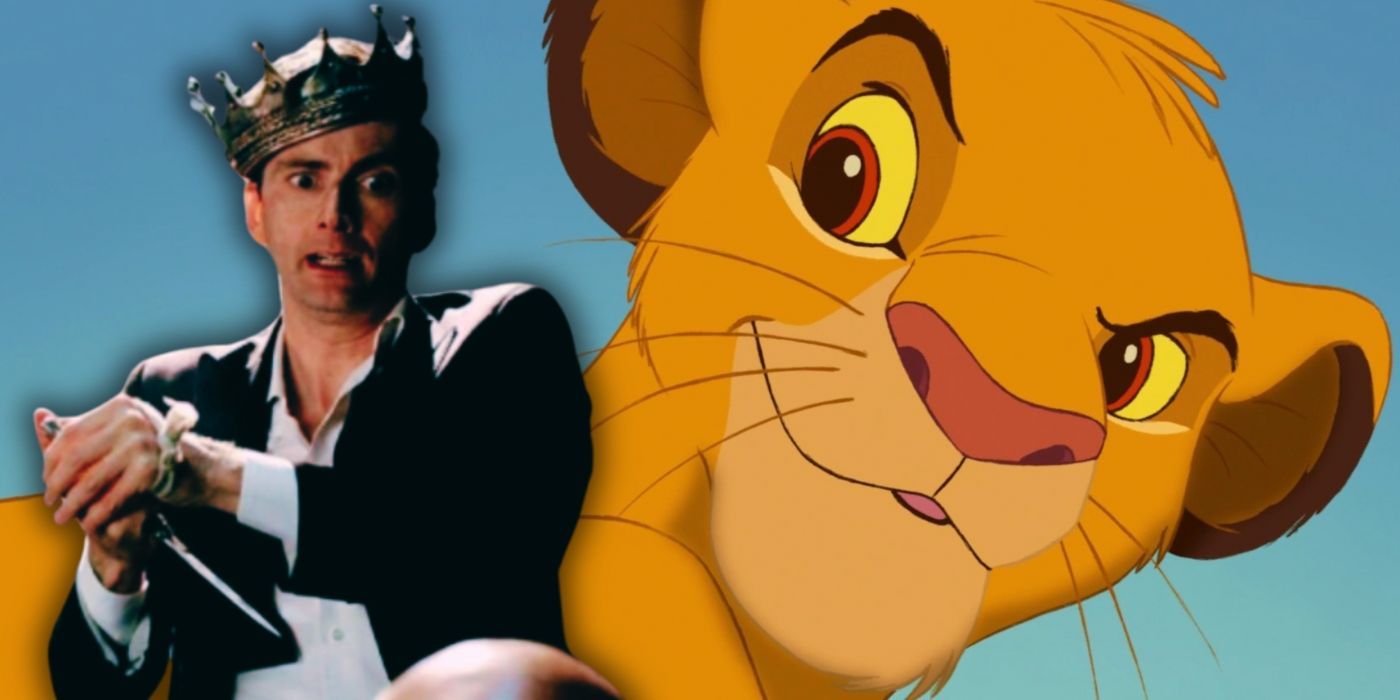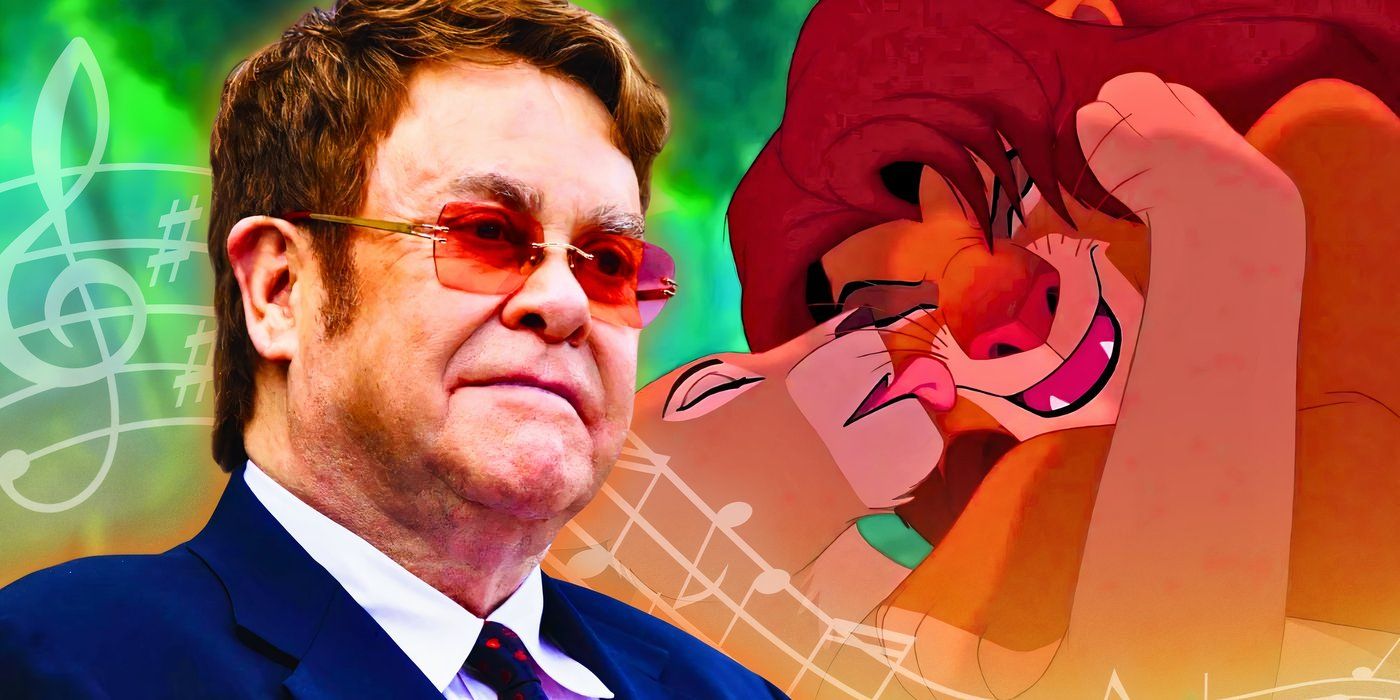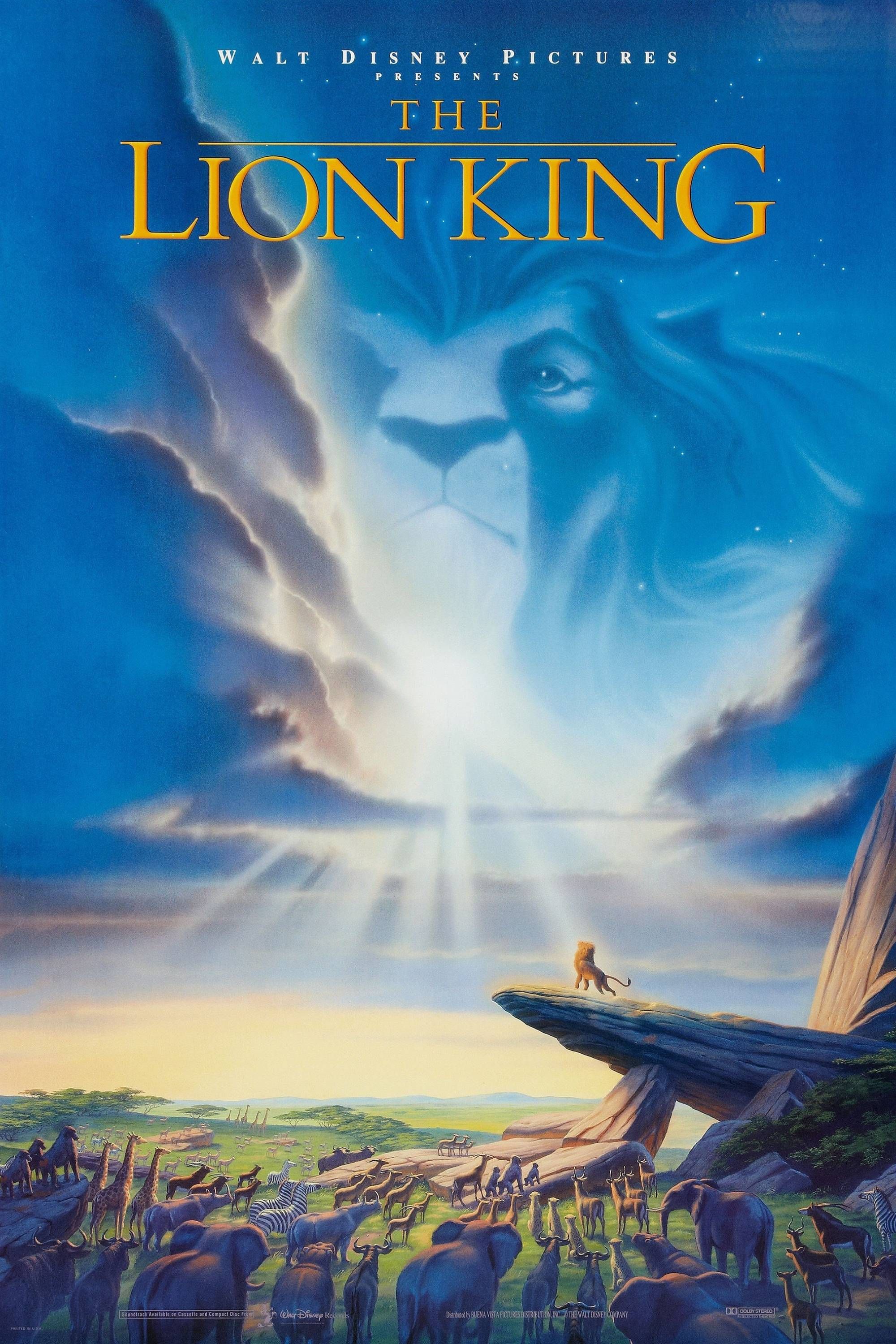Summary
- The Lion King was a Disney Renaissance peak with story, music, and animation in perfect harmony.
- The representation of hyenas and monarchy in The Lion King feels dated when viewed today.
- The franchise’s potential was squandered by direct-to-video sequels that couldn’t match the original.
The Lion King has consistently remained among the most popular Disney movies ever made, but 30 years after its release, some aspects deserve to be re-examined. As the most successful animated movie ever made at the time of its release, The Lion King was a definitive moment in the Disney Renaissance that saw everything from its story, music, and aesthetic style come together in perfect harmony. The Lion King was the perfect example of an immediate classic that could be enjoyed by children and adults alike.
Looking back on The Lion King, the most noticeable aspect was how well it held up and that its status as a Disney animated classic was well-earned. However, some characteristics, like the representations of the hyenas or the jungle’s monarchy system, felt slightly dated when viewed through a modern lens 30 years later. While these aspects deserve to be reexamined, it’s important to remember that this doesn’t diminish the enjoyment of The Lion King but simply acts as a moment of reflection to consider how much the cinematic landscape has changed since 1994.
10 The Romance Of Monarchy Was Questionable
The Lion King’s political system was absolute
Lions, as a species, have long been known as the kings of the jungle, and looking back on The Lion King 30 years later, Disney took this quite literally. It’s true that lions have always held a special place in the ecosystem of the African Savannah, and, as apex predators, they ruled over territories with unmatched strength and authority, but the literal monarchy presented in The Lion King felt somewhat questionable. With hereditary succession in place, looking back on The Lion King, it was jarring to see how naturally its absolute monarchy was presented without backlash from its subjects.
With Mufasa as the ruler of the Pride Lands in The Lion King, the political system presented Simba as the natural-born future leader of the kingdom. However, this was thrown out of wack when Scar initiated his coup d’état, murdered Mufasa, and took over as a tyrannical leader. This highlighted the weakness at the heart of The Lion King’s political system, which could easily be exploited by someone hungry for power, and the harsh reality was that instead of dismantling it, the system was further propagated once Simba returned to the throne, effectively letting the potential pattern of corruption repeat itself.
9 There’s A Lot of Passive Characters
The Lion King’s characters could have resisted more
The Lion King took a dark turn once Scar murdered his brother Mufasa, and to become king, he told the pride that Mufasa and Simba had been killed in a stampede. In a cunning twist, Scar made Simba believe that he was the one responsible for his father’s death and convinced him to leave the kingdom and never return. In order to ensure Scar’s role as king would never be questioned, he also ordered the hyenas to kill Simba, but unknown to him, Simba escaped and came of age in the Outlands, the area beyond the Pride Land.
This was a fantastic set-up for Simba’s development and eventual return, but the harsh reality was that for this storyline to work, it required many characters to be incredibly passive. Despite Scar’s unsuitability for the role of king, the rest of the pride accepted his explanation without question, and nobody appeared to be searching for Simba. Although Scar’s morals were clearly questionable, his right to rule was quickly accepted without pushback from the rest of the pack.
8 The Kimba Connections Were Jarring
The Lion King bore a striking similarity to another work
The Lion King was a major success for Disney and, at the time, became the highest-grossing animated movie ever made, but its release was also controversial, as some were quick to point out its similarities to another work. This was because the characters, plotlines, sequences, and events in The Lion King were highly comparable to the manga and anime series Kimba the White Lion. This even led to the Japanese cartoonist Machiko Satonaka protesting the release of The Lion King (via UPI) and requesting Disney give credit to the late Kimba creator Osamu Tezuka for his contribution to the film.
The harsh truth was, looking back on The Lion King 30 years later, that the comparisons were quite notable, and it was hard to ignore just how similar the name Kimba was to the Disney protagonist Simba. However, with the power of hindsight and seeing just how influential The Lion King became, it’s also true that the film forged its own unique identity. The appeal of The Lion King was not just in its characters’ names or concepts, but also in its incredible animation, timeless music, and spectacular Shakespearean tone, which set it apart from Kimba the White Lion.
7 The Representation Of The Hyenas Was Uncomfortable
The Lion King’s hyenas could have presented differently
Despite being set in the African savannah, The Lion King had an overwhelmingly white cast, which, looking back, made the representation of the hyena somewhat uncomfortable viewing. With African-American actress Whoopi Goldberg as Shenzi and Mexican-descended comedian Cheech Marin as Banzai, the characterization of the hyenas as low-life gangsters on the outskirts of society was interrupted by some as a propagation of racial stereotypes. The hyenas’ role as villainous henchmen may not have been intentionally racist, but the harsh reality was that there were notable stereotypes on display looking back.
One Disney fact viewers may not have known
was the studio was once sued by a biologist who claimed the presentation of hyenas in
The Lion King
as immoral villains amounted to “Defamation of Character,” and they issued a lawsuit on behalf of all hyenas.
While it can feel harsh to judge older media through the lens of modern expectations, it seemed Disney had taken these criticisms on board as the representation of the hyena was quite different in the remake from 2019, with director Jon Favreau stating, “The hyenas had to change a lot” (via Digital Spy.) While many changes were to fit in with the photo-realism style of the remake, this also acted as an opportunity to tone down their stereotypical racial representation.
6 The Environmental Disaster Was Nonsensical
The Lion King’s famine felt out of step with natural phenomena
After Scar took over as the new king of the Pride Lands, things did not go very well for its subjects and the environment, and after his coronation, the land became quickly plagued by famine and drought. While this was an effective demonstration of Scar’s unjust reign, it also felt nonsensical from a literal point of view, and the harsh reality was that this was not how nature worked. As herds began to leave the Pride Lands, Scar’s reign became increasingly unpopular.
Before long, the Pride Lands became a desolate and barren wasteland, and Simba’s return was presented as the only way the kingdom could return to its former glory. This led to the battle for Pride Rock, and after Simba defeated Scar, the rain began to fall, and the fire that had enveloped the land was washed away. Following this, the Pride Lands were returned to their former glory, but the logical issues of how this worked were never fully explained, and to properly accept the ending of The Lion King, audiences had to suspend their disbelief significantly.
5 The Infamous “SEX” Message Controversy Was Hyperbole
The Lion King’s infamous controversy got out of control
One of the most notorious urban myths about The Lion King related to the belief that it contained a hidden message where letters spelling out the word “SEX” were plastered across the sky. While the story behind this belief was fascinating, the harsh truth was that the controversy was categorized by hyperbole and became far more infamous than it ever should have been. This legend took on a life of its own because there was some truth to it, as there was a hidden Easter egg in the sky for viewers to discover.
Instead of spelling such a non-kid-friendly word, the message actually spelled “SFX” and was supposed to be an enjoyable Easter egg inserted by the special effects team working on The Lion King. This revelation did not stop the rumor from spreading, and, to this day, the idea that subliminal messages in The Lion King have remained a talking point. This controversy did not go unnoticed by Disney, and for the 2002 IMAX re-release and 2003 Platinum Edition DVD of The Lion King, the studio chose to remove the letters from the film entirely.
4 The Franchise’s Potential Was Squandered By The Sequels
The Lion King as a franchise had more potential theatrically
As the most financially successful animated movie of all time when it was released, The Lion King had incredible potential as a major franchise. However, The Lion King was released during an era when sequels to Disney movies were commonly considered inferior to the original movie and would instead be released as direct-to-video movies with a lower budget, less promotion, and often less creativity. This meant further releases like The Lion King II: Simba’s Pride and The Lion King 1½ could not stand up to the original.
While it’s true that The Lion King’s direct-to-video sequels squandered aspects of the franchise’s potential, these follow-ups were far from terrible and featured some clever storytelling and enjoyable music. In today’s cinematic climate, it would be a no-brainer for a sequel to The Lion King to be a theatrical release, but that was out of step with the filmmaking climate of the time. However, Disney has once again reignited its interest in The Lion King’s potential as a major franchise, as seen with the release of the 2019 remake and the upcoming Mufusa prequel.
3 It Marked A High Point for The Disney Renaissance
The Lion King was peak Disney during the 1990s
While Disney has been a major animation studio throughout its entire history, it’s commonly accepted that between 1989 and 1999, it released some of its greatest and most enduring movies. This period has been dubbed the Disney Renaissance, which began with The Little Mermaid and ended with the release of Tarzan. This era of incredible creativity led to previously unseen box-office success for Disney, as mostly musical adaptations of well-known stories reinvigorated the modern animation landscape and led to the development of several timeless classics.
While the Disney Renaissance received praise for its impact on animation, the harsh truth was that it reached its absolute peak with the release of The Lion King. With an epic story based on Shakespearean themes, incredible music from Elton John, and a talented voice cast of A-list stars, The Lion King has remained the most consistently enduring movie from this era. While ranking the best Disney Renaissance films was subjective, just looking at the current IMDb ratings confirmed The Lion King’s ruling status, as it had the highest score of 8.5.
2 It’s Rife With Plagiarism (And That’s Okay)
The Lion King was inspired by Shakespeare’s Hamlet
Part of the reason The Lion King has remained so beloved these past three decades was that its story felt like it truly had something to say. Through the embittered characterization of Scar and his festering resentment of his brother Mustafa and his nephew’s right to rule, The Lion King touched upon themes of family, monarchy, and the depravity of tyranny. This story may sound familiar because it was heavily plagiarized from William Shakespeare’s iconic tragedy, Hamlet.
The harsh truth about revisiting The Lion King today was its story was rife with plagiarism, but it’s also true that it never pretended to be a wholly original story. Even Shakespeare himself adapted much of his work from previously told narratives, and The Lion King was born out of a long tradition of using great works of fiction as the template to update stories for new audiences. The Lion King proved that even children could connect with the timeless power of Shakespeare and hopefully fostered a life-long love for theater in some of its young viewers.
1 The Songs Were It’s Greatest Asset
The Lion King’s music was a major factor in its success
The biggest harsh truth of rewatching The Lion King 30 years after it was first released was that the songs were its greatest asset and a definitive aspect of the movie’s success. From “The Circle of Life” to “Hakuna Matata,” the reason The Lion King has carved out such an important place in popular culture was the infectious power of its fantastic music. The Lion King told much of its story through song, and although previous Disney Renaissance movies like Aladdin have some great music, the emotive power of this film’s soundtrack was on another level entirely.
With musical legends like Elton John and Hans Zimmer heavily involved in the music for The Lion King, not only did the film become the highest-grossing animated movie of all time, but the soundtrack shipped over 10 million copies. The Lion King soundtrack went 10× platinum in 1995, and its music was loved and sung by children worldwide. Although The Lion King had a strong story, the truth was that its enduring appeal would not be the same without these incredible timeless songs.
Sources: UPI, Digital Spy, IMDb
